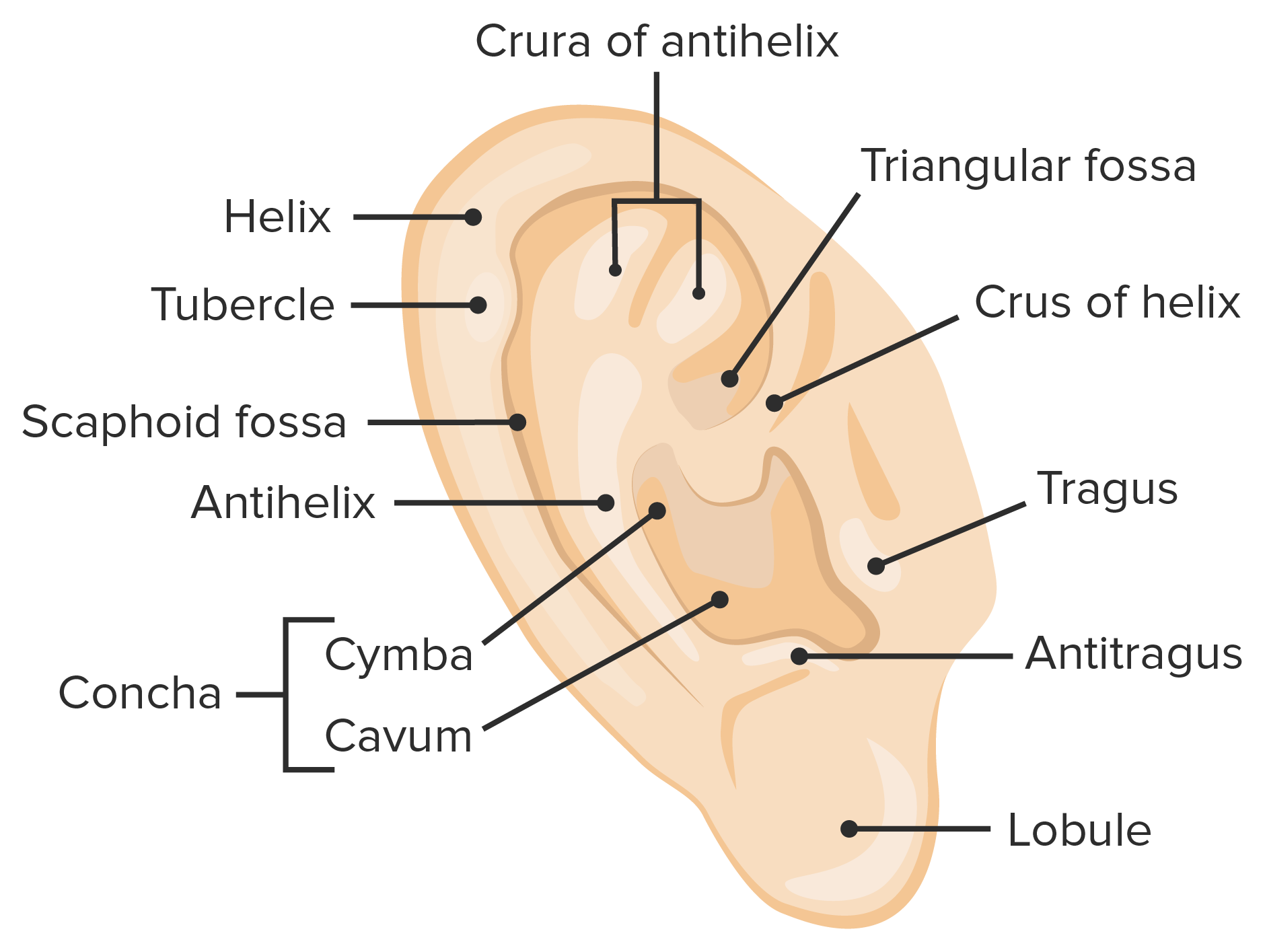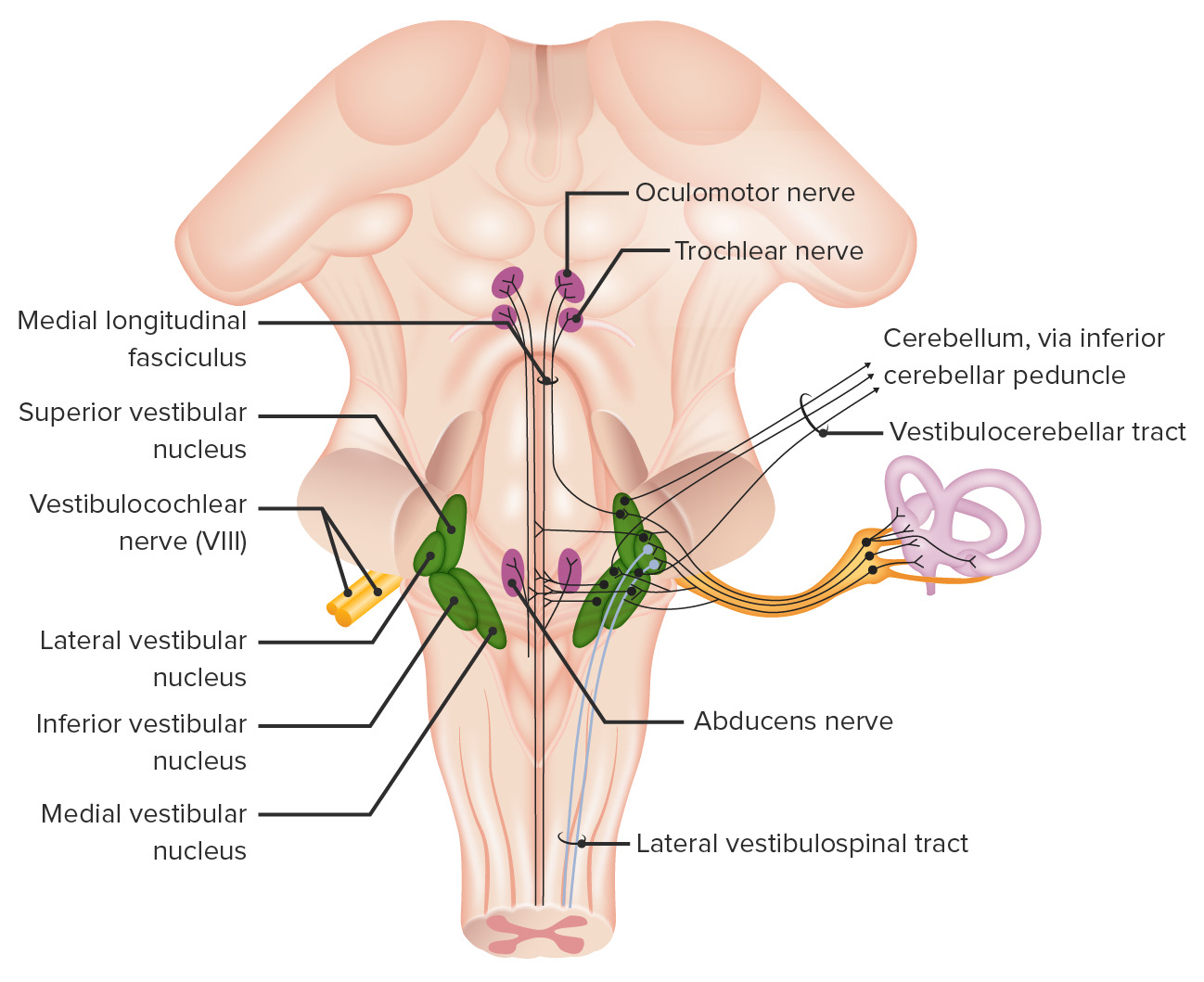Playlist
Show Playlist
Hide Playlist
Hearing: Hair Cells and Semicircular Channels
-
Slides Nervous System-Hearing Balance.pdf
-
Download Lecture Overview
00:01 How hair cells work? These hair cells are important processes. 00:08 These hair cells allow for him to be their move from direction or the other. 00:14 They’re structures is very specific, and have very specific amounts of fluid that they’re filled in. 00:21 So the endolymph is associated with the top portions of the hair cells. 00:28 Perilymph is associate with the bottom portion of the cell. 00:33 What is in special about endolymph, is it's high potassium concentration. 00:39 It's high potassium concentration is different than other areas in the body where usually have the high potassium concentration inside the cell versus outside the cell. 00:50 Perilymph is more normal in nature, in which it has a low potassium concentration. 00:59 So, one of these two different potassium concentrations allow for then the signal process to work. 01:07 Well, a sound wave is going to be traveling down membrane, pushing on this tectorial membrane that will push down against the hair cells. 01:17 As it pushes down against the hair cells, the hair cells will deflect. 01:22 As the hair cells deflect, potassium is allow to rush into those hair cells. 01:29 Why does potassium wants to rush in? Because the endolymph has such high potassium concentration. 01:36 There’s a gradient between the endolymph and the cell itself. 01:41 Membrane potential depolarizes. 01:44 These opens up calcium channels. 01:46 These calcium influx causes synaptic vesicles which have glutamate in them to be released. 01:53 Therefore, these whole processes is set up by potassium entering into the cell to cause depolarization. 02:00 It is then the release of glutamate that is stimulatory to the next nerve that will transmit the information back to the brain. 02:09 You might ask, what happens to the potassium? The potassium exits the cell into the perilymph and then is recycled and brought back to the endolymph. 02:21 Sound Frequency Mapping. 02:25 So now that you understand how a hair cell works. 02:28 We can then bring in more information about how you hear different sounds. 02:33 And different sounds of course have different frequencies, from a high sound to a low sound. 02:40 These different sounds give you the insight into how a particular wave is coming through. 02:47 So, you have hair cells allocated from the base all the way to the apex. 02:54 These will now be responsive to different frequencies. 02:59 If you have a high frequency sound, this is going to stimulate the membrane closer to the base. 03:10 This high frequency sound is because of the greater amount of frequency not talking about amplitude here. 03:17 Frequency, so it's occurring through a large number of frequency waves will hit the hair cells closer to the base. 03:30 Sounds that are lower frequency have a slower wave. 03:35 Those who travel in further into the membrane before they will hit a hair cell. 03:42 That is how you will distinguish between a high pitch and a low pitch, is where the wave comes in to stimulate those particular hair cells associated with the depression in the membrane. 03:58 So we've discussed sound frequency mapping. 04:01 But let's add some richness to that information, and that is a particular frequency, although it primarily stimulates a certain area of the tectorial membrane. 04:12 It will spread a little bit further. 04:15 So let's take an example of that. 04:17 If we look at a frequency, let's say 8000 cycles/second. 04:22 You can see it stimulates a narrow band and if you think about it as the distance from the stay-bees. 04:29 If you take something like the cycle frequency of 400, you can see it stimulates a much wider area. 04:38 That wider area of stimulation is going to engage more hair cells, that gives us a little bit more ability to hear different sounds. 04:49 Besides the sound frequency mapping, the other component that we need to bring out is loudness. 04:56 For example, when you do a test of hearing, you will do it at different frequencies at the same decibel loudness level. 05:06 So how do you determine loudness? They usually is how many hair cells you're actually engaging. 05:13 So you have your outer hair cells that can be stimulated. 05:17 And if it's a loud enough stimulus, you can also stimulate your inner hair cells. 05:24 And the more of these hair cells that are engaged, the louder the sound will be perceived in your cerebral cortex.
About the Lecture
The lecture Hearing: Hair Cells and Semicircular Channels by Thad Wilson, PhD is from the course Neurophysiology.
Included Quiz Questions
Which of the following fluids in the ear has the highest potassium concentration?
- Endolymph
- Perilymph
- Hair cell cytosol
- Plasma
At the auditory nerve synapse level, depolarization of the pre-synaptic membrane causes calcium influx which results in the release of which of the following substances from the synaptic vesicles?
- Glutamate
- Serotonin
- Acetylcholine
- GABA
- Adrenaline
Which ion enters hair cells after membrane depolarization?
- Calcium
- Sodium
- Chloride
- Magnesium
- Potassium
Customer reviews
5,0 of 5 stars
| 5 Stars |
|
1 |
| 4 Stars |
|
0 |
| 3 Stars |
|
0 |
| 2 Stars |
|
0 |
| 1 Star |
|
0 |
explaining slow and efficiently with great questions in the end





